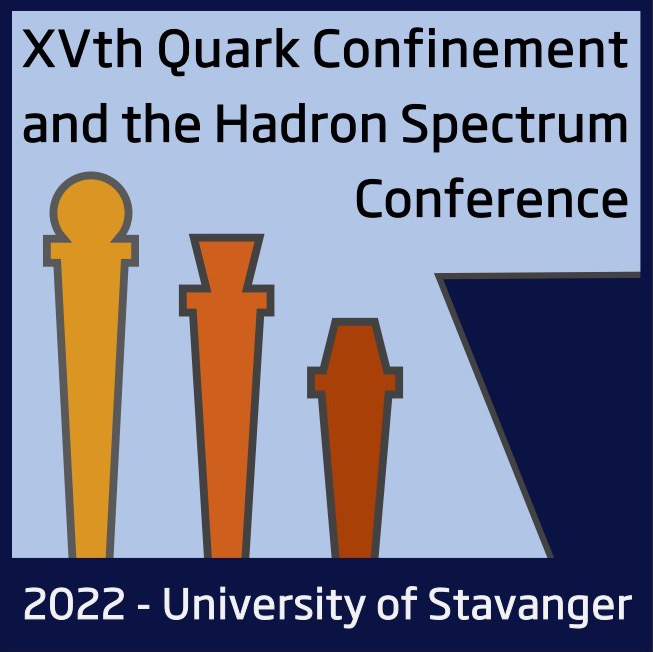Speaker
Description
The Renormalization Group Procedure for Effective Particles (RGPEP) provides the connection between low- and high-energy interactions in QCD through the construction of effective particles [1,2].
The approach reproduces the correct behavior of the coupling constant at high energies (asymptotic freedom) [3] and, at the current level of approximation, the second-order solution of the renormalization group equations yields a Coulomb potential with Breit-Fermi spin couplings, which is corrected by a harmonic oscillator term [4]. These results are obtained assuming that, beyond perturbation theory, gluons get an effective mass.
I present a summary of results obtained with the new method and a regularization procedure which is being tested in different problems.
In the context of a light-front QCD theory for only one heavy flavor, we use the RGPEP to derive the effective potential for 𝑄𝑄¯ and 𝑄𝑄𝑄 that arises at the energy scale at which bound states are formed.
References:
[1] Nonperturbative QCD: A Weak coupling treatment on the light front
K. G. Wilson, T. S. Walhout, A. Harindranath, W.-M. Zhang, R.J. Perry
Phys.Rev.D 49 (1994) 6720-6766
[2] Renormalization of Hamiltonians
S. D. Glazek, K. G. Wilson
Phys.Rev.D 48 (1993) 5863-5872
[3] Asymptotic freedom in the front-form Hamiltonian for quantum chromodynamics of gluons
M. Gómez-Rocha, S. Głazek
Phys.Rev.D 92 (2015) 6, 065005
[4] Renormalized quark–antiquark Hamiltonian induced by a gluon mass ansatz in heavy-flavor QCD
S.D. Glazek, M. Gomez-Rocha, J. More, K. Serafin
Phys.Lett.B 773 (2017) 172-178

